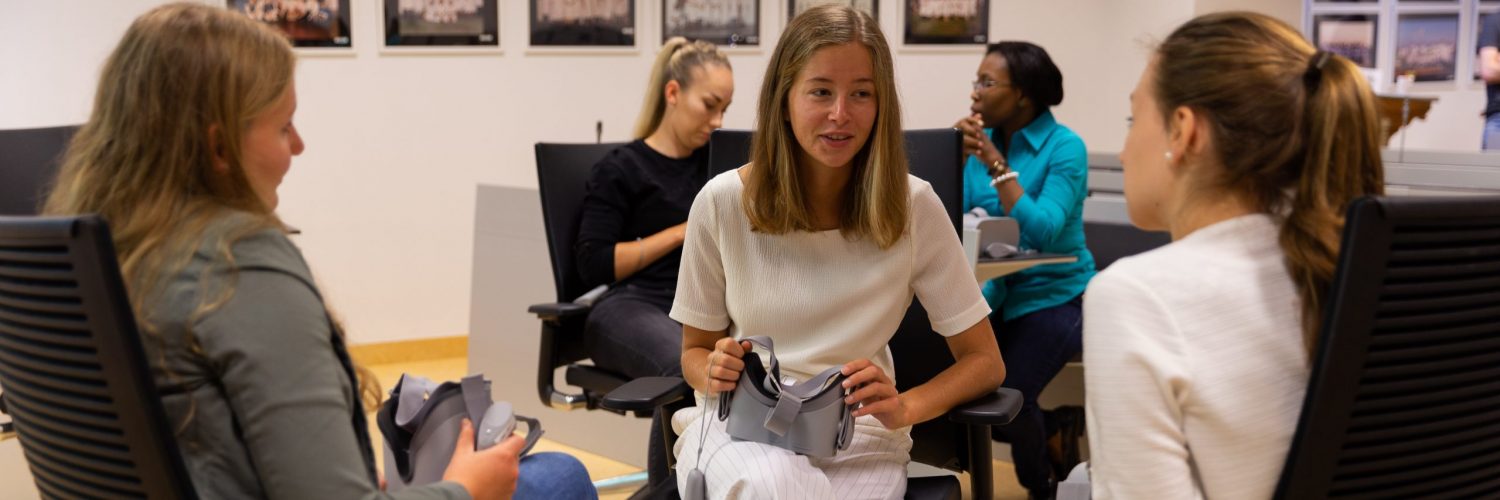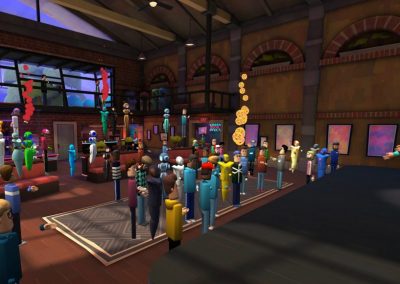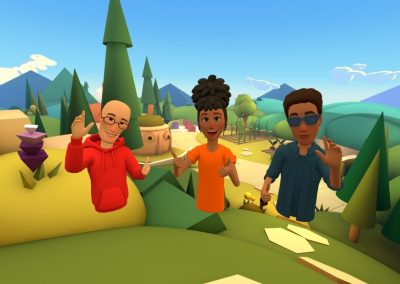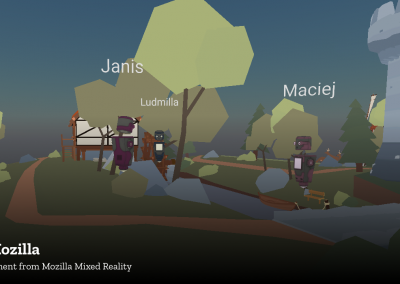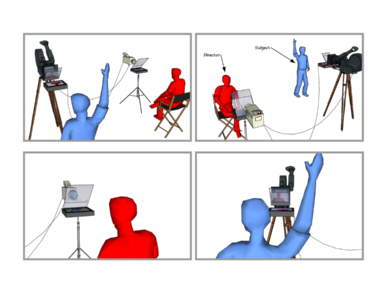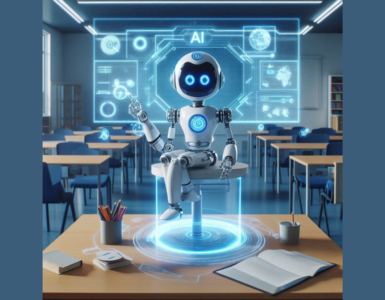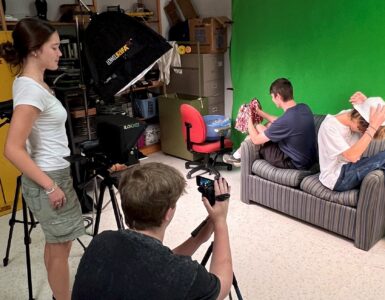‘Does the bomb have a parallel port?!’ my friend shouts into my ear. I turn the bomb around. ‘No, it doesn’t,’ I reply, stressed out. ‘Cut the wire!’ he yells. I hold my breath and cut the wire. Without mercy, the bomb explodes in my face. It turns out that the bomb did have a parallel port.
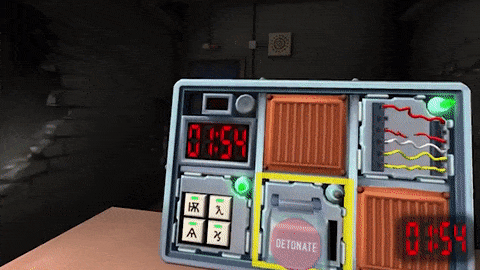
This is a snapshot from one of my favourite VR games, Keep Talking and Nobody Explodes, in which you must defuse a bomb. You depend entirely on your friends, who have a manual with defusal instructions. The catch: you’re in VR, they’re not. You can see the bomb, they can’t. And so it comes down to communication and effective collaboration.
Making the bomb explode was not a complete failure. We tried again, I looked more carefully this time and spotted what could be a parallel port, and we beat the challenge. This is a perfect example of collaborative learning: a situation in which two or more people learn together. You capitalise on each other’s knowledge, skills and resources.
Collaborative learning has long been a tried and tested pedagogical method to enhance learning. Learning collaboratively enables students to learn from one another, while at the same time practicing social skills. It is by no means the only method of learning, and it’s not suitable for every type of activity either. As any teacher would say: it depends on your learning goals. But if those goals involve any social aspect, you can be certain that collaborative learning will be an effective method of teaching.
COLLABORATIVE XR
People are social beings. We communicate with each other constantly and have invented a myriad of ways to simulate these interactions. The personal message has been emulated by letters, phone calls, emails, and Whatsapp. Facebook posts, Twitter and Skype mimic social gatherings. LinkedIn and Zoom are simulacra for business meetings and networking. These platforms aim to simulate social behaviour, and every new technology further enhanced the ‘realness’ of the interaction in some way. However, platform-based interaction can only go so far in replacing real, face to face interaction.
Extended reality offers unprecedented new possibilities to simulate social interactions. Unlike other media, which only simulate social interactions, XR is directly tethered to the user’s body, closely mirroring real-life, physical communication. Moreover, as an immersive medium, it’s not just limited to recreating the world in an authentic way. It can enhance existing methods of communication through virtual tools, virtual places and by bending or breaking the laws which exist in the real world.
We foresee that social XR will play a big role in the future. Not just because of its innate qualities, but also because tech giants have announced they’re going to push it in that direction[1][2][3][4]. On top of that, the current COVID-19 pandemic is accelerating the need for high-quality simulation of social interaction.
POSSIBILITIES
At the moment, social XR is not widely employed in academic XR experiences. This is a shame, since there is a huge potential for it. Here are some key areas in which social XR could enhance current education.
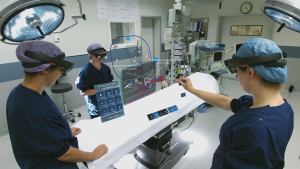
As explained above, learning together can be invaluable. Not only does it enhance learning itself, it also teaches students crucial cooperative and communication skills.An example of collaborative learning in action is the app AugMedicine – Transplant Cases, developed by the Centre for Innovation at Leiden University.
This AR learning experience teaches medical residents about the complexity of kidney transplantations. The experience was built to be social: multiple users can inspect, walk around and discuss a set of CT scans together. In this way, groups of students, supervised by a surgeon, collaboratively learn about the specifics of the ways in which a patient is diagnosed, treated, and monitored during the kidney transplantation process.
Learning empathetically
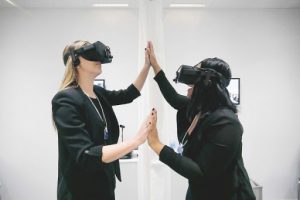
Learning is not a purely rational activity[5]. Stress, curiosity, happiness, anxiety: emotions are part of the learning process. XR is excellently suited as a medium to stir its users’ emotions. It can rouse curiosity in students, or prepare them for the stresses of the working environment, or even teach us to feel more empathetic towards others. The Machine to be Another, a veritable granddaddy in the VR scene, is powerful proof of the emotional impact of an XR experience.
Enhancing current modes of social interaction
The current COVID-19 crisis has made it painfully clear that we need alternative ways to organise our social life. Webcams, online classes and Zoom can only do so much. XR offers new ways to create a social setting akin to real-life situations. But it shouldn’t be limited to just simulating reality: XR can take us anywhere, give us superpowers, and change the rules of the real world. Using XR, students can be taught about far-flung places by virtually visiting them, or by making the unseen visible. A bit more modest, but no less important: XR holds the potential to enhance social interaction, such as seen with Mozilla Hubs and Spatial, by integrating all kinds of tools and offering multiple ways in which people can join and interact.
Stimulating social behaviour in the real world
Social XR is not limited to the experience itself; it can also take place after users remove their headsets. This is an important point: even if the XR experience is a solo one, the experience can still be social. Debriefing together after an XR experience can be very educational, and is a collaborative effort. The Classroom Experience, a VR app developed for burgeoning teachers, is a great example. The experience is solo; students visit hectic virtual classrooms. Every student notices different things, so after the experience they discuss their observations in small groups. This collaborative reflection leads to new insights for everyone.
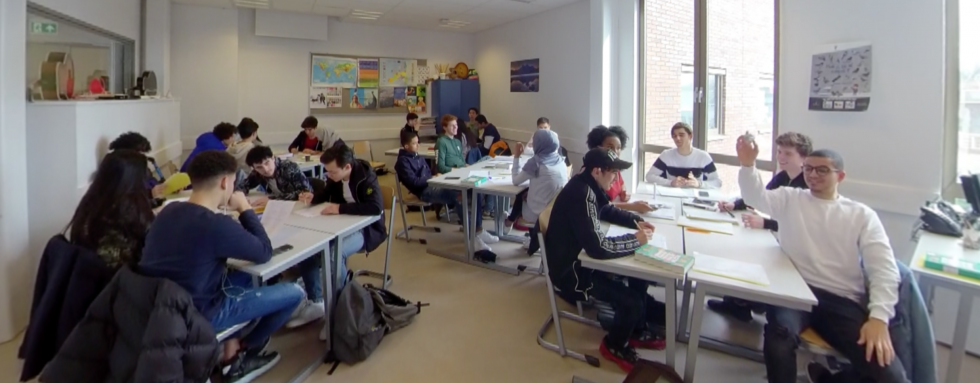
SOLO VS SOCIAL
So, should every XR experience be social? The answer is no. There is great power in the immersiveness and solitude of a solo XR experience. Solo experience can be the way to go if you want the user to be on their own, to experience a moment of seclusion. A story could be more powerful when no-one else is listening, as is the case in Where Thoughts Go, or between user and narrator in Notes on Blindness VR. A learning experience can be more intense if students are on their own, and have to solve a problem themselves. It all depends on your goals.
We think social XR is a worthwhile avenue to explore for academic XR experiences. Currently, most XR learning experiences are solo. Despite additional technological challenges during development and deployment, it would be a missed opportunity not to explore social XR’s potential for academic education.
SOURCES
- Oculus – Facebook Horizon Invite-Only Beta Is Ready For Virtual Explorers
- Facebook – Introducing the new Facebook Reality Labs […]
- Business Insider – Microsoft is banking on social platforms for VR adoption
- Engadget – HTC’s Vive XR Suite lets people work together even if they’re not all in VR
- Frontiers in Psychology – The Influences of Emotion on Learning and Memory
Editor’s note: This article first appeared in on the XR ERA site, XR ERA is an open, independent platform that was founded by the Centre for Innovation, at Leiden University to promote closer collaboration in the field of extended reality (XR) in academia. It is re-published here with permission of the author.

Author
Thomas Ginn
Educational Storyteller & Virtual Reality Director, Centre for Innovation, Leiden University, The Netherlands

